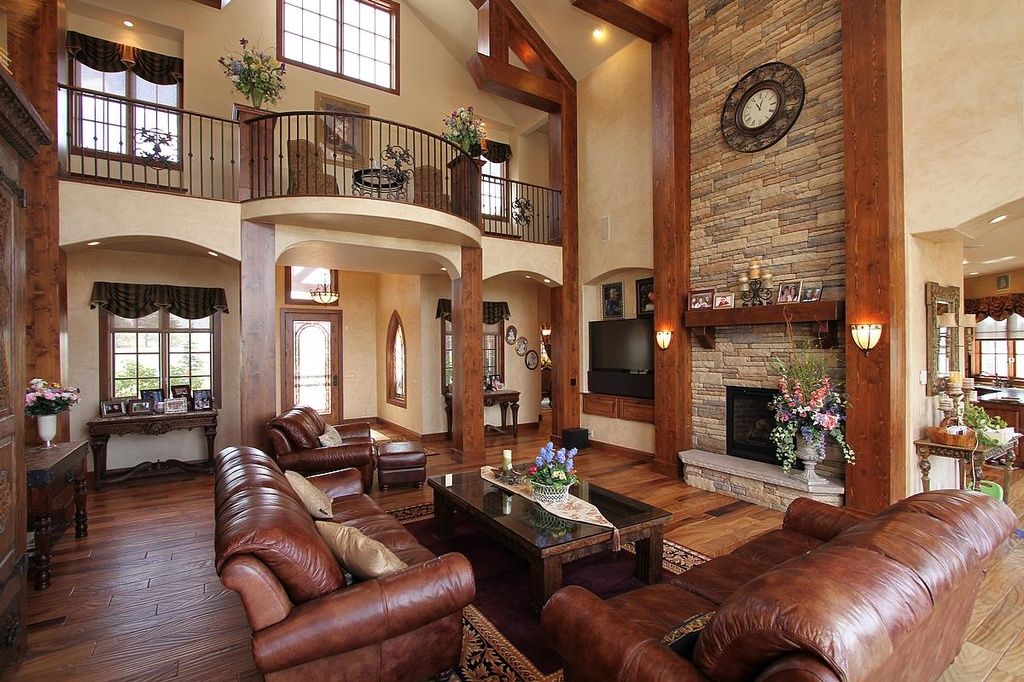#1853. Luxurious double-height interior with rustic elements and a monumental stone fireplace
This impressive country house interior represents a magnificent example of a modern interpretation of rustic style with classic elements. The key feature of the space is a two-story living room with an open plan that creates a sense of spaciousness and airiness. Massive wooden beams, serving both structural and decorative functions, emphasize the ceiling height and add organic character to the interior.
The central element of the composition is a monumental fireplace with natural stone facing, which occupies nearly the entire height of the wall. This is not just a source of heat but an architectural dominant around which the entire space is organized. The stonework successfully contrasts with the warm beige walls and rich wooden elements, creating a multi-layered textural solution.
The furniture ensemble is represented by luxurious leather sofas in a deep brown color that perfectly fit into the overall color scheme of the interior. A polished wooden coffee table with a glass insert serves as an elegant accent. The parquet floor with its noticeable wood texture adds warmth and solidity to the space.
The double-height ceiling with an elegant balcony gallery not only visually expands the space but also creates an interesting play of volumes. The wrought iron balcony railing elements bring a note of Mediterranean aesthetics. Designing the facade and interior space in such a style requires special attention to proportions and materials to create a harmonious combination of grandeur and comfort.
The competent lighting solution deserves special attention: the combination of natural light from tall windows, built-in ceiling lighting, and wall sconces creates a multi-level lighting system that can change depending on the time of day and the mood of the owners.
Decorative elements such as floral arrangements and framed photographs add individuality and lived-in character to the space, softening the monumentality of the architectural solution. This interior demonstrates how to create an impressive yet comfortable living space by combining classical principles of spatial organization with modern ideas of comfort.
